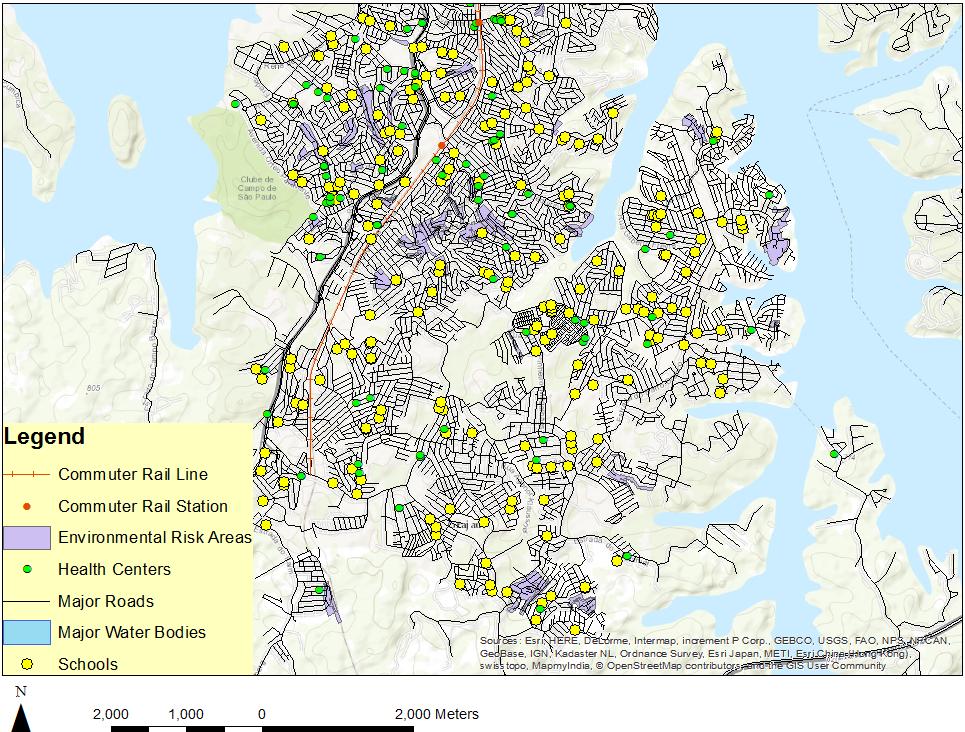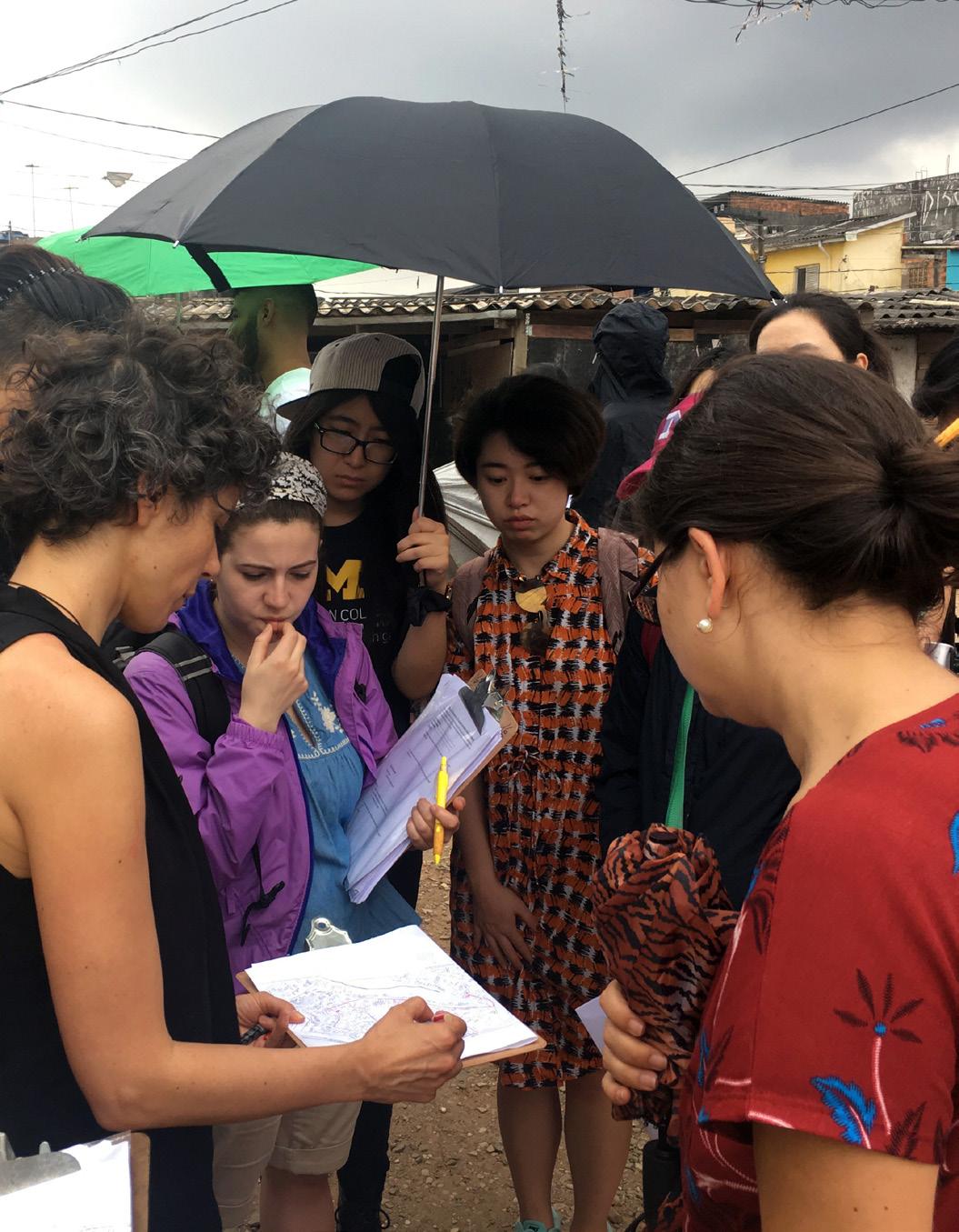
2 minute read
Sources
32 Basic Infrastructure Overview in the Grajaú District, São Paulo, Brazil.
watershed around the municipal water supply, caused land prices to soar (de Oliveira, 2005). As a result, people moved further south to land that was not as expensive, and thereby caused more water pollution and deforestation. This problem is even more severe in poorer areas, where parks, including ones that are nominally protected, are being occupied and used for housing (de Oliviera, 2005). Consequently, the municipality concluded that it is easier to legalize and upgrade the infrastructure of these areas, instead of destroying them and evicting their residents, which ultimately leads to more environmental degradation.
Caldeira, T. P. (2016). Peripheral urbanization: Autoconstruction, transversal logics, and politics in cities of the global south. Environment and Planning D: Society and Space, 0263775816658479.
Carvalho, C. S., & Rossbach, A. (2010). The City Statute of Brazil: A Commentary. Cities Alliance, Cities Without Slums.
de Oliveira, Maria Aparecida. “Urban Sprawl, Land Markets and Environment Degradation in São Paulo, Brazil.” Land and Urban Policies for Poverty Reduction (2005): 357.
Fernandes, Edésio. (2007). Constructing the Right to the City in Brazil. Social & Legal Studies, 16.2, 201-219.
França, E. (2017). Integrated Urbanization of precarious settlements: a panoramic vision on the Brazilian and São Paulo experiences (presentation). 6 March
Jacobi, P. (2004). The challenges of multistakeholder management in the watersheds of São Paulo. Environment and Urbanization, 16(2), 199-212.
Jacobi, P. R., Paz, M. G., Leão, R. S., & Estancione, L. M. (2013). Water governance and natural disasters in the Metropolitan Region of São Paulo, Brazil. International Journal of Urban Sustainable Development, 5(1), 77-88.
Johnsson, R. M., & Kemper, K. (2005). Institutional and policy analysis of river basin management : the Alto-Tietê river basin, São Paulo, Brazil. Policy Research Working Papers.
Macedo, Joseli. (2007). Urban land policy and new land tenure paradigms: Legitimacy vs. legality in Brazilian cities. Land Use Policy 25, 259-270.
Montandon , D. T. (2017, March 2). Legal framework to promote the right to the city: special zones of social interest (ZEIS) and other instruments. Lecture presented at WORKSHOP PARAISÓPOLIS INFORMA: STRATEGIES FOR STRENGTHENING THE COMMUNITY in Brazil, São Paulo.
Prefeitura de São Paulo. (2017). ObservaSampa. Retrieved from http://observasampa.prefeitura. sp.gov.br/index.php/indicadores/indicadorespor-regiao/
Ribeiro, S. C., Daniel, M. N., & Abiko, A. (2016). ZEIS maps: Comparing areas to be earmarked exclusively for social housing in São Paulo city. Land Use Policy, 58, 445-455.
Rolnik, Raquel. (2013). Ten years of the City Statute in Brazil: from the struggle for urban reform to the World Cup cities. International Journal of Urban Sustainable Development, 5(1), 54-64.

03
FIELD METHODOLOGY
This chapter explains the different methods used to gather data to inform our design and planning recommendations.






